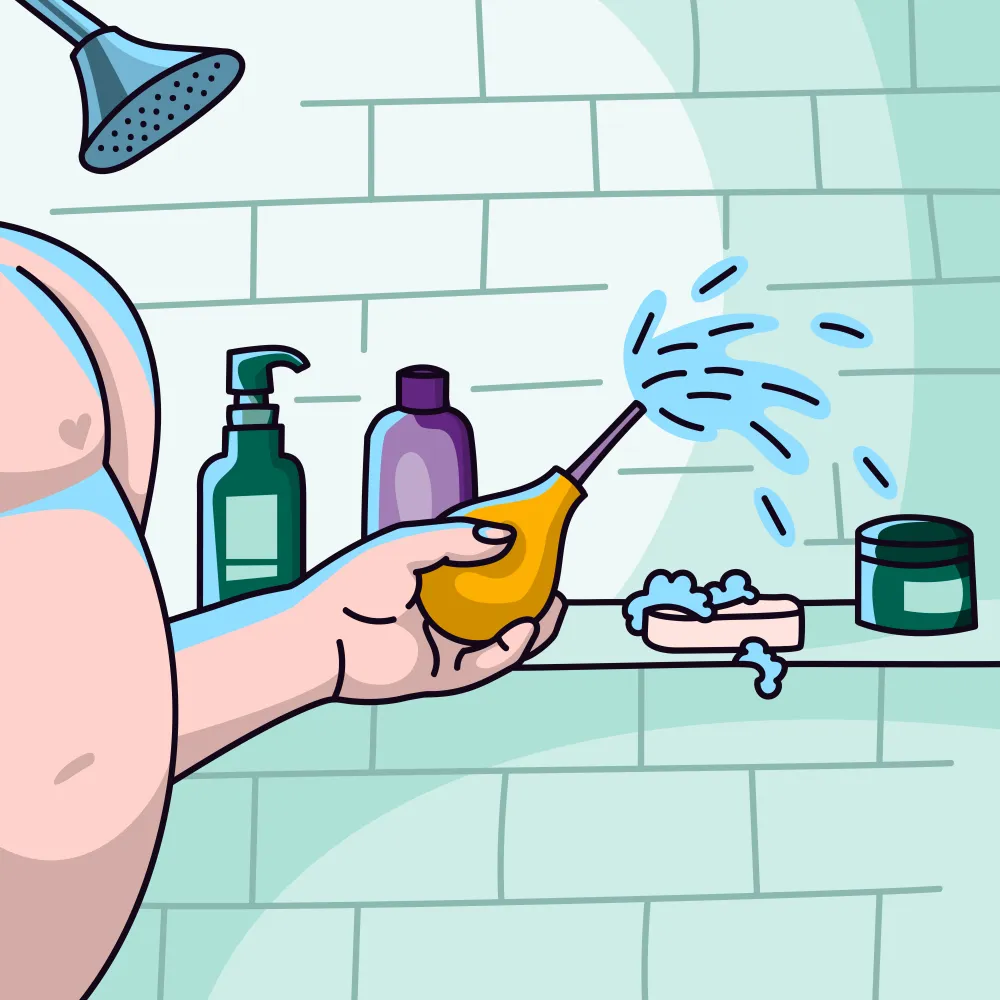If you’ve had a hookup at any point since 2009, you’ve probably used Grindr. For better or worse, it’s transformed how queer people meet each other. Gone are the days when bars or cruising were our only option – when it comes to getting laid, our phones are now the ultimate wingman. Or wingperson! Phones don’t have a gender.
Grindr is now the biggest gay “networking” app, with 13 million global users. That’s 13 million people who call blowjobs “networking”! Wild. It’s a world of gay opportunity, but it can also be overwhelming. We’re here to help you navigate it.
We’ll cover some tips to make your hookups safer and, ultimately, more fun. It will also apply if you’re using other apps like Grindr – Scruff, Jack’d, Sniffies, Squirt, Recon etc.
Building your profile
How you build your Grindr profile is up to you. You can add as much or as little as you want.
More information makes it easier to find others who match your vibe. It also saves you having to ask about these topics when you’re chatting. Grindr lets you add:
- Stats (age, height, weight, body type, ethnicity)
- Tags (under kinks, hobbies, personality, and identity)
- Sex position (e.g. top, bottom, vers, side)
- Relationship status
- What you’re looking for
- If you accept NSFW pics
- Gender and pronouns
- HIV status, vaccinations, and last STI test date
- Social media
You can mix and match depending on what you’re comfortable sharing. Photos also help show others what you’re looking for. For example, wholesome clothed photos and “looking for dates” tells a very different story than a headless chest pic and “top hosting NOW”.
Want to be discreet?
Sometimes you might not want to use photos. Maybe you’re not out yet, or maybe your bio is truly depraved and you don’t want the neighbourhood gays to know it’s you. Either way, we support you!
Be aware that a blank profile won’t get as many messages. If you don’t have photos and you’re messaging someone who does, it helps to open by sending a photo or two. For more privacy, Grindr has an “expiring photos” option where photos can only be opened and viewed once.

Safety first
The more info you have about a hookup, the safer it is. How much info you collect is up to you and your comfort level. Sometimes anonymity is, like, the whole point, and before you know it you’re on your way to an apartment with only a buzzer number and a dick pic but then the concierge asks who you’re there to see and you have to reach deep into your brain for everything you learned from that one improv class you took back in 2016. Just us?
Anyway, sometimes you may want to play it safe. If your hookup goes south, having information could help if you need to report anything. Their name, photo, address and phone number can all be useful. The chance of something bad happening is low, but it’s best to be prepared.
It’s also important to protect yourself from sexually transmitted infections (STIs) like HIV. For many, using condoms is a reliable option, but there's an additional step you can take for peace of mind: PrEP, a medication that can help prevent HIV. You can even get PrEP delivered directly to your home, making it easier than ever to protect yourself.
If you want to be extra safe, tell a friend where you’re going and arrange a time to check in afterwards. If you're just going on a date then meeting in a public place can be safer.
Verifying your hookup
Everyone uses flattering pics because, duh. It’s a hookup app! We’re here for a reason. But sometimes photos can be a little unreliable. They could be out of date or, at worst, a full-blown catfish.
If you want to verify your hookup matches their profile, you can:
- Check their socials. If they have Insta (or Twitter 😈) linked in their profile.
- Ask for a photo. If their profile seems suspicious, ask them to send you a custom photo (e.g. with a thumbs up).
- Video chat. You can do this in the app if you don’t want to swap numbers.
- Meet beforehand. This could be right before the hookup, like in a building lobby, or at a neutral spot like a nearby bar.
When you’re chatting
Be kind.
If you wouldn’t say it to someone’s face, don’t say it on Grindr. There are people behind profiles – even blank ones.
Give what you want to get.
If you want to see face pics, be willing to send them. Same goes for nudes. Whether you send nudes is always your choice, but don’t demand them if you’re not willing to return the favour.
Communicate!
No-one likes being ghosted. If things are going well but then their photos aren’t what you’re into, a simple “Sorry, I don’t think we’re a match” is good. If you want to soften the blow, a little white lie (“I’m actually more into twinks” or “bears are more my thing”) never hurt anyone.
Prepare for rejection.
We can’t be everyone’s type, and not everyone will be yours. That’s ok! Grindr chats can move quickly, and sometimes people ghost or block out of nowhere. Try not to take it personally – there are plenty more fish in the digital sea.
Ask first.
Not everyone is into a dick pic out of the blue (ok fine, if it’s a great one then maybe). If you want to swap nudes, just ask.
Don’t share their nudes.
It’s illegal. You can also prevent this by using Grindr’s album feature instead of sending photos separately. The album will prevent anyone from taking screenshots. Neat, right?
Tip: When taking or sharing nudes, it's a good idea to crop your face out of them. This makes it harder to identify you if they get shared without your consent.
Agree details.
Set your boundaries and discuss what you’re into. The more you discuss, the more you know what to expect. Are you using condoms? Are you ok with poppers, weed or hard drugs? Who’s fucking who? Are there any others involved?

When you’re at the hookup
Clean up.
Shower beforehand! It’s common courtesy. Unless they’ve specified otherwise (looking at you, pit lovers). If you’re hosting, maybe move that pile of laundry? Nobody wants to get laid on a bed of dirty socks (again, unless you’re into that).
You can end it at any time.
If they don’t look like their photos or things are happening that you didn’t agree to – like drugs or other people present – you can end it. Stay calm, say “sorry, I’m just not feeling it” and head out or politely ask them to leave.
Watch your valuables.
If you’re hosting, hide your valuables before your hookup comes over. If you’re travelling, don’t take more than you need.
Sober is safer.
We’ve all opened Grindr in… questionable states, but the more sober you are the easier it is to assess any dangers. Alcohol, GHB, ketamine, opioids and benzos (like Xanax) are all downers. This means they can make you sleepy and less able to consent.
Taking a Grindr break
Some people use Grindr all the time, some might download it for short stints, and some may never use it. Whatever you decide, it's valid! Grindr isn't for everyone – even if you enjoy it, sometimes you might need a break.
However you use Grindr and other hookup apps, remember to look after yourself. That means being aware of physical dangers and trusting your gut if something feels strange. It also means looking out for your mental health. If you find you're not enjoying Grindr or your mood isn't great, try taking some time off the app and see if that helps. Dicks may come and go, but your wellbeing is important!
This article was not sponsored or endorsed by Grindr.





%20(1).png)







